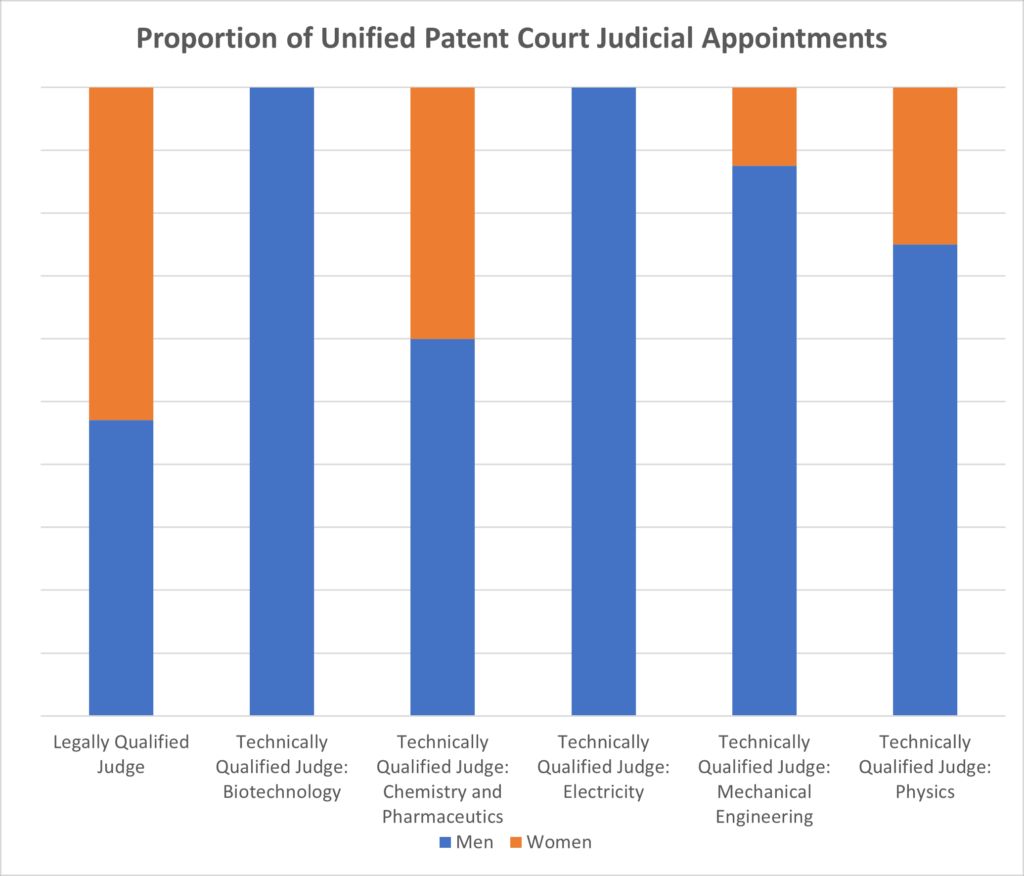- with readers working within the Pharmaceuticals & BioTech industries
In Europe, women remain grossly under-represented in research and innovation. A recent study by the European Patent Office (EPO) found that only 13.2% of inventors in Europe are women.
The Unified Patent Court (UPC) is a new Court that is being set up to decide in particular on the infringement and validity of both new Unitary Patents and classic European Patents; comprising judges from all participating Member States of the European Union.
The Unified Patent Court has now confirmed the appointment of a total of 85 judges (34 legally qualified judges and 51 technically qualified judges) to take up their duties as of the entry into force of the UPC Agreement. Looking at the composition of the UPC Judiciary, taking the published prefix of Mr and Ms for each Judge as a proxy for men and women we looked the relative proportions of appointments (see table 1). Women are set to make up slightly more than half (16 Mr : 18 Ms) of the Legally Qualified Judges.
However, this is not true for Technically Qualified Judges.

It is widely reported that the percentage of female STEM graduates is considerably lower than male STEM graduates.
Women in Tech reports that:
Around 15% of engineering graduates are female, 38% for Maths,
and 19% for Computer Studies. This gap in STEM education translates
in the workplace to men dominating the industry with just 19% being
women. Encouraging girls to study STEM subjects with the view of
pursuing a career in tech is important not just for the campaign
for gender equality in society, but also for the UK's
competitiveness as technology pioneers. It has been estimated that
by 2025, the UK will be 1.8 million short of engineers. Levelling
the playing field and making a career in tech more appealing and
exciting in the eyes of future generations is a way to prevent a
skills shortage in the future of the UK tech industry.
Although we do not know what proportion of UPC judicial candidates were women, overall, in the UPC as in STEM, it would appear there is still some way to go for women in their technical fields to reach parity with men.
Table 1

The content of this article is intended to provide a general guide to the subject matter. Specialist advice should be sought about your specific circumstances.


